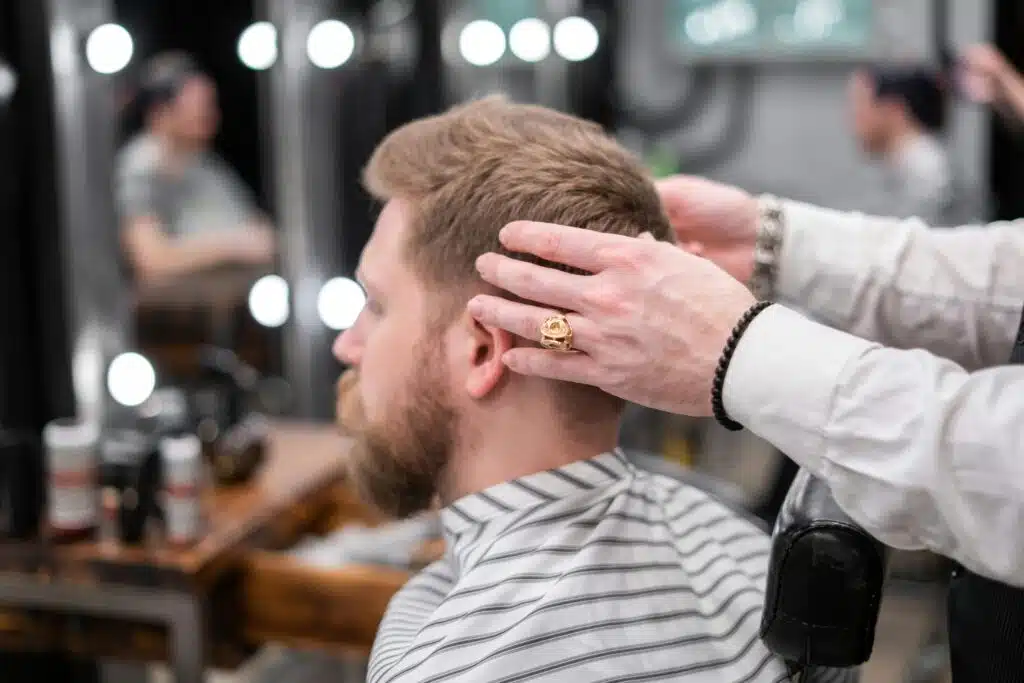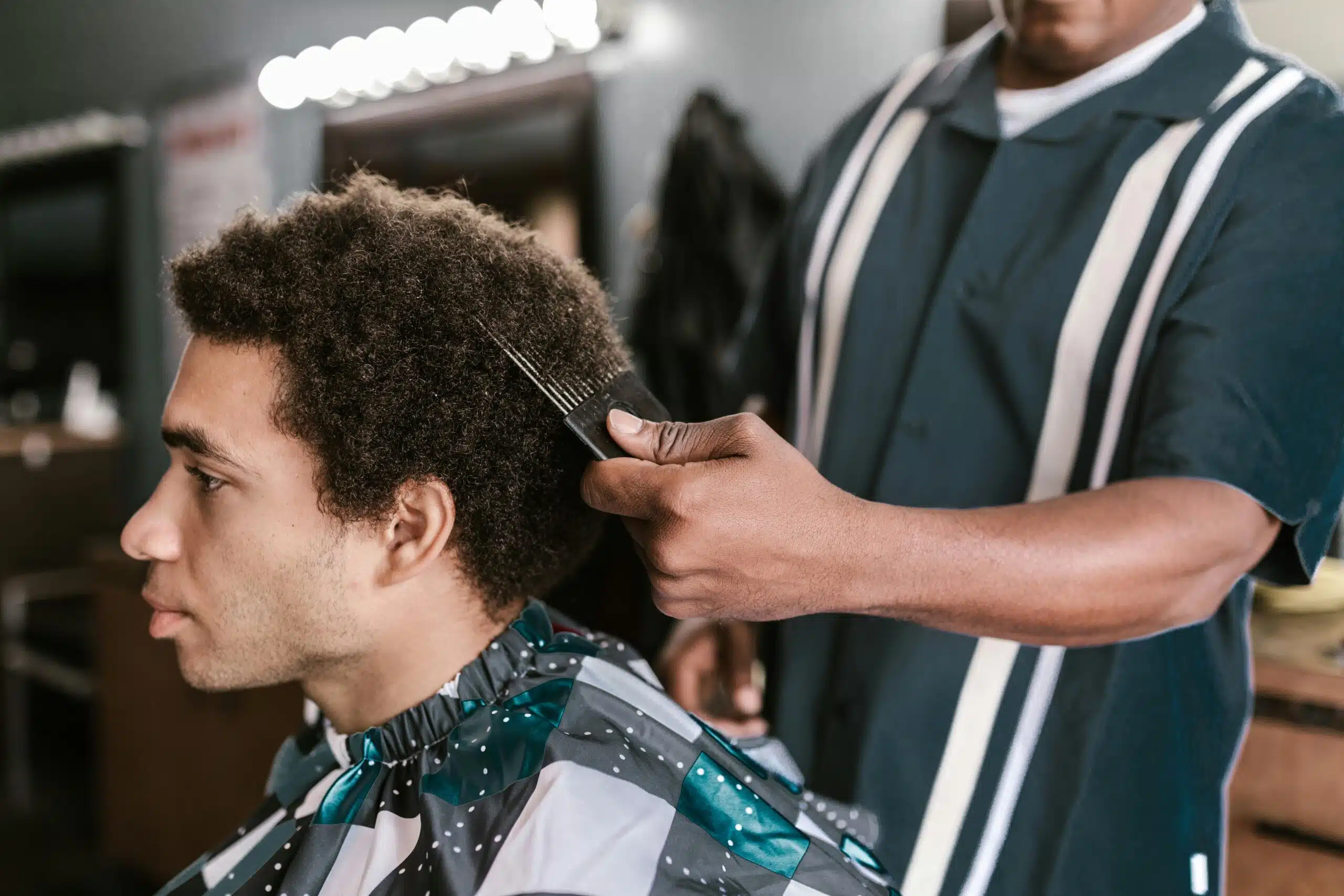Do you dream of thicker, fuller hair? You’re not alone. Many men face the frustrating reality of thinning hair and are on a quest for solutions that work.
Let’s debunk common myths and reveal the real ways to achieve the lush locks you’ve been longing for. Imagine waking up every morning with a hairstyle that turns heads and inspires envy. It’s all within reach.
In this comprehensive guide, we’ll explore innovative techniques that have transformed ordinary hair into extraordinary manes and share expert insights to help you understand what really matters in hair health.
Stay tuned as we delve into must-know strategies and practical steps that will significantly improve your hair game. Your path to thicker hair starts now!
1. Understanding Hair Anatomy
Before we dive into how to thicken hair, it’s crucial to understand the basic structure of hair. Hair is made up of keratin, a protein found in your skin and nails. Each strand of hair consists of several layers. The innermost layer is the medulla, which isn’t always present in finer hair. Surrounding it is the cortex, the thickest layer, full of fibrous proteins. The outermost layer, the cuticle, functions as a protective barrier. It’s composed of overlapping cells, much like roof shingles, which help to lock in moisture and shield against external damage. Ever wonder why hair appears shiny? It’s due to smooth cuticles. When these lie flat, they reflect light, giving your hair its sheen. Nutrition, stress management, and proper hair care can greatly influence how much time your hair spends in the growth phase, thereby affecting overall thickness. Now that you understand the basics of hair anatomy and growth, you’re better prepared to tackle the complexities involved in achieving thicker hair.Keep this information in your back pocket—it’ll be essential as we explore actionable tips for fuller, healthier hair.
Remember, empowerment begins with knowledge. And now, you’re in the know. Let’s take this newfound knowledge and turn it into powerful strategies for thicker hair!
2. The Role of Diet in Hair Health
Ever heard the saying, “You are what you eat?” When it comes to hair health, this couldn’t be more accurate. Nutrition plays a pivotal role in how your hair looks and feels. Hair cells are among the fastest-growing cells in the body, but because they’re not essential to survival, a nutritional imbalance can affect them first. Proteins are of utmost importance—after all, hair is made primarily of protein. Sources like lean meat, fish, eggs, and beans should be staples in your diet. Vitamin C-rich foods aid in iron absorption. Think citrus fruits like oranges, strawberries, and guavas. Iron contributes to red blood cell production, ensuring hair follicles receive sufficient oxygen. Don’t underestimate the significance of healthy fats. Omega-3 fatty acids found in fish oil and flaxseeds are known for their anti-inflammatory properties and scalp health benefits. Zinc is essential, too. Without it, hair cell production and repair slow down significantly. Oysters, nuts, and seeds are excellent sources.B vitamins, particularly B7 (biotin) and B12 are crucial for hair growth, reducing hair loss, and improving its texture. You’ll find abundant B vitamins in whole grains, almonds, and avocados.
Proper hydration is a must, too. Dehydrated hair is more prone to falling, so keeping your body well-hydrated means your hair has a better chance of staying in place.
Feeling unsure about committing to diet changes? Start small. Swap out processed snacks with nuts, and enjoy lean proteins over red meats.Your hair will thank you for fueling it with premium-grade nutrients it’ll use to grow stronger and thicker.And remember, consult with a healthcare provider to design a nutrition plan that’s tailor-made for your needs.
3. Embrace Targeted Hair Care Products
Not all hair care products are created equal, especially when your goal is to thicken your hair. The right products can make a noticeable difference in the volume and health of your hair. First off, assess your shampoo and conditioner. Opt for varieties labeled ‘volumizing’ or ‘thickening,’ as they’re specifically formulated to enhance hair density. Examine ingredient lists for biotin, keratin, and collagen boosters. These ingredients are known for their reproductive, strengthening, and hydrating properties. Leave-in conditioners and thickening serums are your new best friends; they can add body and fullness to your hair post-wash. Be mindful of high-sulfate products—they might lather nicely but can strip your hair of essential oils, leaving it brittle over time. Consider incorporating a scalp treatment into your regimen. Healthy scalps mean healthy follicles, which leads to thicker hair. Not sure where to start with selecting products? It’s a worthwhile endeavor to consult with a trichologist or dermatologist.
Don’t forget: Consistency is key! Use products regularly as instructed for the best result, and monitor how your hair reacts over a few months.
4. Solutions for Hair Thinning and Hair Loss
Hair thinning and loss can seem daunting, but numerous solutions are available today that can help address these concerns head-on. Firstly, assess your lifestyle. Stress is a major contributor to hair thinning. Relaxation techniques such as yoga or meditation can have a positive impact on your overall well-being, including hair health. Topical minoxidil has been a trusted solution for years, promoting hair growth and combating thinning. It’s widely available over the counter; however, patience is required, as results can take a few months. Oral medications like finasteride have shown significant promise in dealing with male pattern baldness. Always consult with a healthcare provider for advice and potential side effects.
Modern treatments, such as microneedling and PRP (platelet-rich plasma) therapy, are increasingly popular and trusted by medical professionals for stimulating hair growth.Consult a dermatologist or trichologist to determine the most effective treatment plan tailored to your specific needs.
Explore nutritional supplements tailored to men’s hair health, such as those that include a blend of essential vitamins and minerals.Don’t underestimate the power of holistic approaches—such as acupuncture and certain herbal supplements, which some swear by for improving hair health.
Hair transplants remain a lasting solution for chronic balding, but they are costly. Ensure you research thoroughly and consult with credible professionals if this path interests you.
Keep in mind that results vary, and what helps one person might not help another. Persistence and a little trial-and-error are needed for hair loss solutions.Remember, the earlier you identify and tackle hair thinning, the better your chances of managing it effectively.
5. DIY Home Treatments for Hair Growth
When it comes to thickening hair, some of the most cost-effective solutions can be found right in your kitchen.A scalp massage with essential oils like rosemary or peppermint can improve circulation and rejuvenate hair follicles. Simply mix a few drops with a carrier oil like coconut or olive oil.Try an egg yolk and olive oil mask; rich in proteins and fatty acids, it can strengthen your hair strands. Whip them together and leave it on your scalp for 20 minutes before rinsing thoroughly. If itching or dryness is an issue, consider an aloe vera gel mask. It’s hydrating and soothing, ideal for maintaining a healthy scalp environment. Did you know onion juice contains sulfur, which is essential for hair regrowth? Blend onions, strain the juice, and apply it to your scalp for 15 minutes before washing out. A green tea rinse is antioxidant-rich, supporting hair growth. Brew, cool, and use as a final hair rinse post-shampoo. Apple cider vinegar can be diluted with water as a scalp toner. Its acidity can clear follicle-clogging residue and balance the scalp’s pH levels. For those who enjoy tea-time rituals, fenugreek seeds have been valued in traditional hair care. Soak overnight, blend into a paste, and apply as a mask for nourished strands. Focus on consistency with these treatments. Like many natural solutions, they take time to show results.Make sure to patch-test any new ingredients and steer clear of any potential allergens.

6. Scalp Care: The Foundation of Hair Growth
Think of your scalp as the bedrock on which thick, healthy hair grows. A well-cared-for scalp can accelerate hair growth and improve overall hair quality. Start with regular exfoliation. Like your skin elsewhere, your scalp can benefit from the removal of dead skin cells and excess oil buildup through gentle exfoliating scrubs. Brush your hair daily with a boar bristle brush. This improves blood circulation and encourages your natural oils to coat the hair strands. Avoid aggressive washing and harsh chemical-laden shampoos that strip your scalp’s natural moisture barriers. Understanding the importance of maintaining a balanced pH; products that are too alkaline or acidic can disrupt this balance, leading to a range of problems from dryness to dandruff. Moisturize regularly with scalp oils. Jojoba and castor oils are excellent choices, full of nutrients and deeply hydrating. Consider scalp exercises or massages using your fingertips—these can promote hair growth by stimulating circulation. Reduce heat exposure; while a hot shower is relaxing, hot water can be drying. Instead, rinse with lukewarm water and finish with a cool blast. Keep strategies seasonal; your scalp may need extra care in dry winter months vs. humid summers. Sun protection is often overlooked. If outdoors for prolonged periods, wear a hat or apply a UV-protectant spray. If dandruff is persistent, a zinc pyrithione or ketoconazole shampoo, used periodically, can manage and relieve the symptoms. Your scalp narrative is crucial. Dedicate time to taking care of it, and the robust, thick hair you desire will follow naturally.

7. The Impact of Lifestyle Choices on Hair Thickness
Our daily habits significantly influence the health and vitality of our hair. By aligning our lifestyle choices with good hair care practices, we can cultivate thicker, healthier hair. Smoking has a detrimental effect on blood circulation, including circulation to the scalp, which can affect hair growth. Quitting smoking can thus indirectly promote thicker hair. Sleep is vital for hair growth as it’s during sleep that your body repairs itself. Aim for at least 7-9 hours of quality sleep every night. Manage stress. High stress levels can trigger conditions like telogen effluvium, where stress significantly disturbs the hair growth cycle. Consider the environment you work or live in. Pollution and harsh weather conditions can lead to hair damage. Take necessary precautions when exposed to these conditions. Engage in regular physical activity. Even a simple daily walk can increase circulation and bring more nutrients to your scalp. Mindful practices, such as yoga or tai chi, offer stress relief and combine well with your efforts for better hair health. The choices you make each day add up to the lasting resilience and fullness your hair reflects. Embrace the power you hold over your hair’s destiny!

8. Why Genetics Matter
While many factors contribute to hair thickness, genetics play a pivotal role in determining hair attributes such as thickness, color, and texture. Your genetic makeup dictates the diameter of your hair and the natural density of hair follicles on your scalp. The presence of certain genes makes some men more sensitive to DHT (dihydrotestosterone), a hormone that can shrink hair follicles over time. Understanding your genetic predisposition does not imply a lack of agency—it helps tailor strategies to best suit your biological makeup. Genetic testing, although not compulsory, can provide insights into potential future hair thinning concerns, enabling earlier intervention. Any hair journey should appreciate genetic factors, not as obstacles, but as a compass guiding toward best-suited care regimens. When you learn from genetic insight, you’re equipped to navigate the world of hair care with understanding and intentional action.

9. Embrace New Hairstyles and Cuts
One immediate and practical way to deal with thinning hair is to work with it—by embracing new hairstyles and cuts tailored to your current thickness. A consultative meeting with a skilled stylist can reveal styles that naturally enhance available hair volume. Opt for layered cuts. Layers can add volume and texture to thin hair, creating a fuller appearance. Buzz cuts or bald looks are strikingly stylish; they require minimal maintenance and make a bold statement. The modern crew cut: another excellent option—short and sharp, offering a visually fuller top when enough hair is present. Styles with longer fringes or upward-flowing elements may cover thinning spots, giving off a contemporary and balanced appearance. Colors and highlights can magnify texture and add depth, making hair look more prominent if executed with finesse. Maintain openness to change. Hair evolves, and so too do styles—staying flexible ensures adaptation through different trending preferences and hair stages.
Key Takeaways for Thicker Hair in Men
In conclusion, a man’s hair can be thickened through a mix of good hair care practices, healthy behaviors, and, occasionally, medical treatments. To promote hair development, start with a well-balanced diet high in vitamins and minerals. Steer clear of strong chemicals and excessive heat since they might weaken your hair. Using conditioners and shampoos that thicken hair can also help. You can maintain and enhance the thickness of your hair by following these methods consistently.

